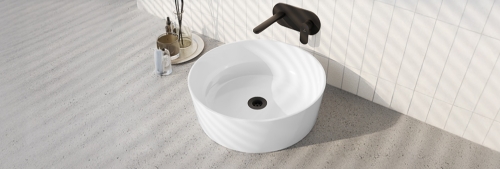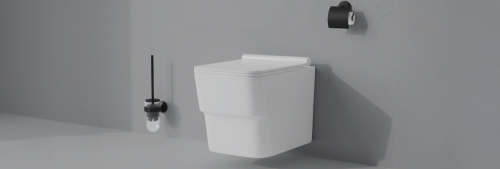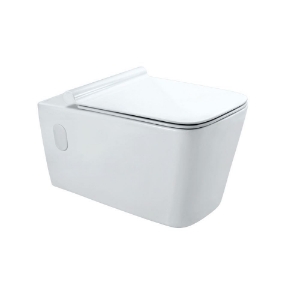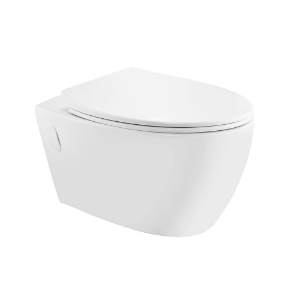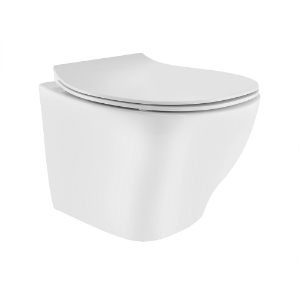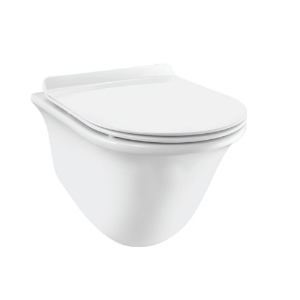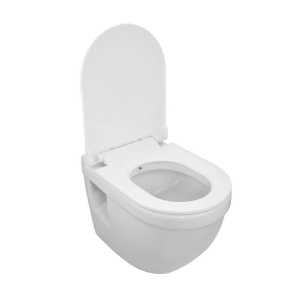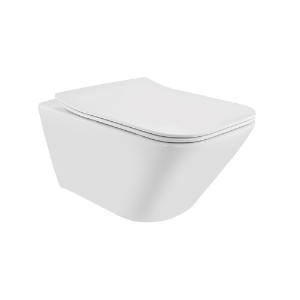Ever thought the humble toilet could prompt a design debate? When you remodel your bathroom, you may be thinking about tiles, taps, or tubs, but believe it or not, your toilet seat plays a subtle yet significant role. It is an important fixture in your daily comfort, hygiene, or simply a way to uplift your home style. Many homeowners are considering an often forgotten question: rimmed or rimless?
Jaquar offers rimmed and rimless, wall-hung or free-standing toilets, emphasising performance and style. But how do you choose the right one for you? This blog considers the customary differences, pros and cons, and favourable uses for rimmed and rimless toilets so you can select the right fit for your modern bathroom without trials and troubles.
Rimmed Toilet Seats
Rimmed toilets, generally known as conventional or standard toilets, have a rim on the inside of the toilet bowl's edge. When you flush the toilet, water flows out from underneath the rim to clean the bowl surface.
Rimmed toilets have not gone away because they have a comfortable, easy-to-use shape. Jaquar’s floor-mounted rimmed toilets provide sound serviceability because rimmed toilets have reliable flushing systems with constant water flow. Rimmed toilets will also serve homeowners who want a traditional look or want to keep the same style of toilet seat installation.
One of the challenges of rimmed toilets is cleaning under the rim. Over time, residue from hard water and the elements that come with it may cause bacteria to grow in this area. Consistent upkeep and regular deep cleaning are important to maintain toilet seat hygiene with rimmed toilets.
However, for most households, a rimmed WC is still a comfortable, cost-effective solution with good performance.
Pros of Rimmed Toilet Seats
Affordable compared to rimless models.
Familiar design, widely available across brands.
Reliable flushing performance with consistent water flow.
Easy replacement when upgrading older bathrooms.
Cons of Rimmed Toilet Seats
Harder to clean under the rim, leading to bacteria and limescale buildup.
Requires frequent scrubbing to maintain hygiene.
Less water-efficient than rimless alternatives.
Installation and Maintenance
Rimmed toilets are relatively easy to install, making them a preferred choice for homeowners who want a straightforward upgrade or renovation. They are compatible with most floor-mounted setups, and plumbing adjustments are minimal. However, the inner rim demands diligent cleaning routines, ideally weekly, to prevent odour and buildup. Using antibacterial cleaning agents and rim brushes ensures the seat remains sanitary.
Features and Suitability
Rimmed toilets usually come in both floor-mounted and close-coupled options, which makes them suitable for traditional layouts. They provide a slightly deeper bowl shape, which some users find more comfortable. These models are best suited for family homes, rental properties, or households prioritising affordability over advanced hygiene features.
In South Africa, rimmed toilets are still commonly found in suburban homes and apartments where budget and familiarity matter most. For families comfortable with regular cleaning, rimmed models remain a practical and long-lasting option.
Rimless Toilet Seats
Rimless WC configurations are a modern form of toilet technology. Unlike rimmed versions of toilets, rimless toilets do not have an inner rim. Instead, water is drained from the bowl through a strong, direct flow method, distributing water evenly into the bowl, without leaving hidden spots of waste behind.
Modern rimless toilet design results in a cleaner and easier-to-clean product. With no rim, there is less hiding space for bacteria and dirt, and a visibly cleaner flushing system results from modern toilets that align more with a contemporary lifestyle.
Jaquar carries a variety of wall-hung, nicely designed rimless toilets that look good with minimal or modern decor. As a wall-hung unit, minimal floor space is needed, making cleaning the floor simple.
From an aesthetic perspective, rimless toilets are qualitatively sleeker and have a significantly stronger streamlined look. The edges also typically tend to be softer, and the toilet seat shape is also typically ergonomically designed to balance user comfort and aesthetics.
Pros of Rimless Toilet Seats
Superior hygiene due to the absence of hidden surfaces.
Easy to clean and maintain with minimal effort.
Modern, sleek design that elevates bathroom aesthetics.
Water-efficient flushing system.
Often available in wall-hung options, saving space.
Cons of Rimless Toilet Seats
Higher cost compared to rimmed models.
Requires compatible bowls, not always suitable for older setups.
Wall-hung versions may need professional installation with reinforced walls.
Installation and Maintenance
Rimless toilets are typically installed in wall-hung or close-coupled formats. Wall-hung rimless models require stronger wall brackets and concealed cisterns, which may increase installation costs but result in a floating, space-saving design. Maintenance is far simpler compared to rimmed toilets. A quick wipe with mild bathroom cleaner is usually sufficient, as there are no hidden crevices for grime.
Features and Suitability
Rimless toilets often include ergonomic seat designs, soft-close lids, and water-saving dual-flush systems. They are best suited for modern homes, urban apartments, premium hotels, and hygiene-conscious households. In South Africa, rimless toilets are increasingly popular among homeowners opting for contemporary, minimal bathroom aesthetics.
Their sustainability angle—using less water while achieving superior flushing—is also appealing to eco-conscious users. Combined with their elegant design, rimless toilets are becoming the go-to choice for households prioritising both style and hygiene.
Design and Functionality
The right choice depends on your space, routine, and cleanliness preferences.
Rimmed Toilet Design:
- Familiar contours that fit with classic or transitional bathrooms
- Slightly deeper structure and toilet seat height, offering more traditional seating comfort
- Often easier to retrofit in renovations or when replacing an old standard toilet
Rimless Toilet Design:
- Streamlined silhouette with minimal edges
- Greater flushing precision, improving hygiene with every use
- Easier daily and deep cleaning, ideal for homes that prioritise sanitation
Both toilet flushing systems are engineered for performance, though rimless toilets distribute water evenly across the bowl, reducing streaks and buildup.
Toilet Seat Installation and Placement
Wall-mounted toilet seat installation to the wall provides a great look and a modern feel to the bathroom while freeing up valuable floor space in smaller bathrooms or even a minimalist design.
On the other hand, floor-mounted toilets provide some additional stability and require little to no structural changes, making them suitable for standard or retrofit installations.
When looking at placement, make sure to consider the toilet seat dimensions, especially the projection from the wall and the width of the toilet seat. In smaller bathrooms, you will use the space with toilet seat designs with less projection, while bigger bathrooms can allow for the usage of elongated (for comfort) seat designs.
Cost Comparison: Rimmed vs. Rimless Toilets
When deciding between rimmed and rimless toilets, cost is often a determining factor. Rimmed toilets are budget-friendly, typically priced lower and available in a wide variety of models. This makes them an attractive option for rental properties, budget renovations, or secondary bathrooms. Their installation costs are also lower, as they require minimal structural changes.
On the other hand, rimless toilets come at a premium price point, especially when paired with wall-hung systems. While the upfront cost is higher, they offer long-term savings through reduced cleaning supplies, lower water consumption, and extended durability. Rimless models often feature dual-flush mechanisms, further cutting down utility bills.
For homeowners upgrading their bathrooms, the decision depends on balancing short-term affordability with long-term benefits. Rimmed toilets suit cost-conscious buyers, whereas rimless options appeal to those seeking modernity, hygiene, and sustainability.
Sustainability and Water Efficiency
In South Africa, where water conservation is a growing concern, the choice of toilet design directly impacts sustainability. Rimless toilets outperform rimmed models in water efficiency. Their direct flush technology ensures water is evenly distributed with less volume, often using as little as 4–6 litres per flush compared to 9–12 litres in older rimmed toilets.
Many rimless models also feature dual-flush systems, giving users the option between a full or half flush depending on the need. This small adjustment leads to significant water savings over time.
Rimmed toilets, while reliable, may use more water, particularly if the rim clogs or requires repeated flushing for cleanliness. For eco-conscious households, this inefficiency can be a drawback.
By choosing rimless toilets, South African homeowners align with sustainable living goals, reducing water bills while supporting conservation efforts. Their efficient flushing systems make them the better long-term investment for environmentally responsible households.
Comfort and User Experience
Beyond hygiene and design, comfort plays a key role in toilet selection. Rimmed toilets offer a familiar seating experience, often with slightly deeper bowls and standard heights. This traditional comfort suits older users or households that value tried-and-tested ergonomics.
Rimless toilets, however, bring a modern twist to comfort. They often come with ergonomic seat designs, soft-close lids, and adjustable heights in wall-hung models. Their sleek contours and elongated shapes enhance user comfort, particularly for taller individuals or households with children.
Additionally, rimless toilets reduce unpleasant odours due to their efficient flushing and smoother surfaces, contributing to a fresher bathroom environment.
For South African homes blending style with practicality, rimless toilets provide not only enhanced hygiene but also a more enjoyable daily experience. Still, for users who prefer traditional seating and budget-friendly upgrades, rimmed toilets remain a reliable option.
Hygiene Considerations: Which Is Better?
One of the most substantial advantages of rimless toilets is the apparent improvement in hygiene. The absence of an inner rim means fewer areas for limescale and bacteria to accumulate. This results in cleaning becoming quicker, less frequent and more effective.
Jaquar’s rimless models are crafted with smooth contours and high-quality toilet seat material resistant to stains and odours. They also allow for better water efficiency, as the flush covers more surface area with less water, helping support a more sustainable bathroom routine.
Still, rimmed toilets can remain clean and odour-free with regular maintenance. It's a matter of how much daily effort you’re willing to invest and your hygiene expectations. Based on your requirements, you can compare rimmed vs. rimless toilet seats and choose the one that fits your place perfectly!
Aesthetic Choices
Choosing the right toilet seat design goes hand in hand with defining the broader mood of your bathroom. Rimless toilets naturally align with sleek, contemporary interiors, while rimmed units offer a traditional edge that suits heritage or mixed-style spaces.
The shape of the toilet seat can also influence the overall design coherence. Oval or D-shapes work well in tighter layouts, while elongated bowls give a more spacious and comfortable appearance.
In either case, Jaquar’s collection ensures consistency across form and function, with visual balance between the toilet and surrounding features.
Making the Right Choice for Your Home
Here are some of the factors to consider while making your choice:
- Bathroom Size: Wall-hung, rimless toilets are ideal for smaller rooms due to their floating appearance. Larger bathrooms can accommodate either design comfortably.
- Cleaning Habits: If you prefer a low-maintenance bathroom, rimless is the superior option for cleanliness.
- User Demographics: For homes with children or elderly users, seat height and flush power should factor into your selection.
- Design Preferences: Minimalist? Go rimless. Prefer classic symmetry? Rimmed may be your match.
Ultimately, both options have merits; it comes down to your priorities and how you balance design with day-to-day living.
The rim vs rimless toilet seat comparison isn’t just about aesthetics; it’s about how your bathroom works. Whether you choose the classic comfort of a rimmed toilet or the modern ease of a rimless option, your decision should reflect your routine, design preferences and hygiene goals.
Jaquar’s range of wall-hung and floor-mounted toilets offers reliable performance and thoughtful design.
They are engineered for comfort, hygiene and long-term durability. Their rimmed and rimless options provide elegant solutions for varied interiors, supporting traditional and contemporary bathroom layouts with reliable performance.
FAQs:-
Q.1 What is the difference between rim and rimless toilet designs?
- Rimmed toilets have a concealed rim for water flow; rimless designs allow direct, even flushing with better visibility and easier cleaning.
Q.2 Are rimless toilets more hygienic than traditional ones?
- Yes, Rimless toilets eliminate hidden areas, reducing bacteria buildup and making cleaning quicker and more effective.
Q.3 Do rimless toilets require special maintenance or cleaning?
- No special products are needed. Their smooth design makes regular cleaning easier and faster than rimmed models.
Q.4 Which toilet type is more water-efficient?
- Rimless toilets often use less water while achieving more effective bowl coverage, improving flushing performance and efficiency.
Q.5 Are rimless toilets more expensive to install?
- They may require slightly more planning, especially in wall-mounted versions, but overall installation remains straightforward for professionals.
Q.6 Which is more durable: rimmed or rimless toilets?
Both designs are durable if made from high-quality ceramic. Rimless toilets, however, experience less limescale buildup, which can help them maintain performance longer with minimal wear.
Q.7 Do rimless toilets splash more when flushing?
No. Modern rimless toilets are engineered with advanced flushing technology that directs water precisely, preventing splashing while ensuring full bowl coverage.
Q.8 Can rimless toilets be retrofitted into old bathrooms?
Yes, but retrofitting may require adjustments to plumbing and wall brackets if you’re opting for wall-hung models. Floor-mounted rimless toilets, however, can usually replace older rimmed versions with minimal changes.
Q.9 Which is better for families with children?
Rimless toilets are often better for families because they are easier to clean and more hygienic. However, rimmed toilets are sturdier and more affordable for children’s bathrooms or secondary spaces.
Q.10 Do rimless toilets save cleaning time?
Absolutely. With no inner rim to scrub, cleaning is faster and more effective. Many homeowners report reduced weekly cleaning time when switching to rimless toilets.
Q.11 Which type is more eco-friendly?
Rimless toilets are generally more eco-friendly due to their efficient water distribution and lower water consumption per flush. They align well with South Africa’s water conservation goals.
Q.12 Are rimmed toilets going out of style?
Not entirely. While rimless designs are trending, rimmed toilets remain common in traditional homes and rental properties because of their cost-effectiveness and wide availability.
Q.13 Which toilet type is easier to install?
Floor-mounted rimmed toilets are easier and cheaper to install. Rimless wall-hung toilets require skilled installation and stronger support structures, which can increase labour costs.
Q.14 Do rimless toilets require special cleaning products?
No. Standard non-abrasive bathroom cleaners are sufficient. Their smooth design makes them easier to clean compared to rimmed toilets that require rim brushes for deep cleaning.
Q.15 Which type offers better aesthetics for modern bathrooms?
Rimless toilets are superior for modern bathrooms. Their sleek lines, minimal edges, and floating wall-hung options provide a contemporary, uncluttered look.
Q.16 Can rimmed toilets still be considered hygienic?
Yes, with consistent cleaning. Using antibacterial sprays and rim brushes weekly can keep rimmed toilets hygienic, though they require more effort than rimless models.
Q.17 Do rimless toilets cost more to maintain?
No. Rimless toilets typically cost less to maintain since they require less cleaning and use less water. Rimmed toilets may require more frequent deep cleaning, which adds to maintenance effort.
Q.18 Which is better for small bathrooms?
Rimless wall-hung toilets are best for compact bathrooms. They save floor space, create an illusion of openness, and make floor cleaning much easier.
Q.19 Do rimless toilets have a stronger flush?
Yes. Their direct flush system distributes water powerfully and evenly across the bowl, often performing better than traditional rimmed flushing.
Q.20 What warranty options are available for rimmed and rimless toilets?
Brands like Jaquar typically offer 5–10 years warranty on both rimmed and rimless models. This ensures reliability and peace of mind for long-term use.

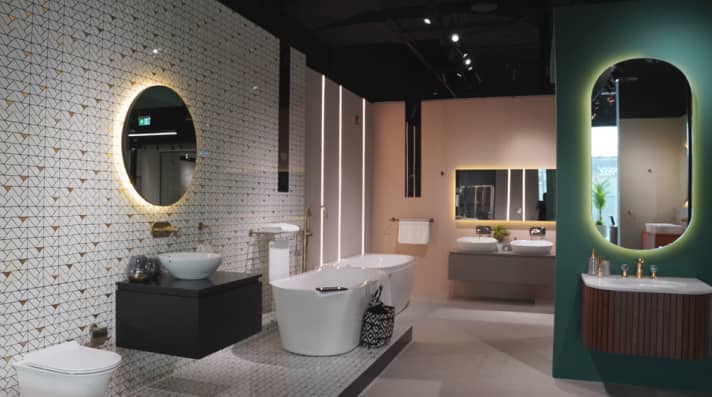

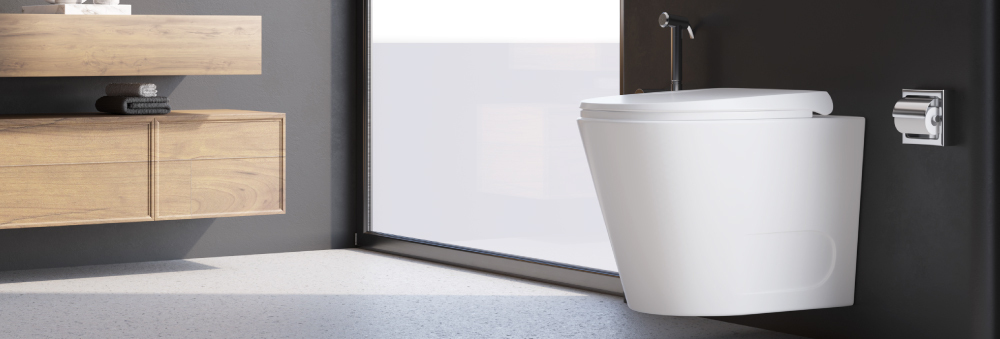
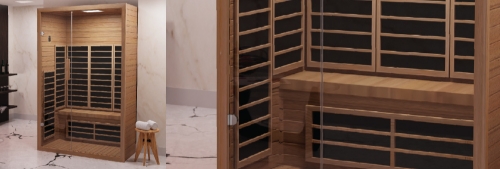
_500.jpeg)
